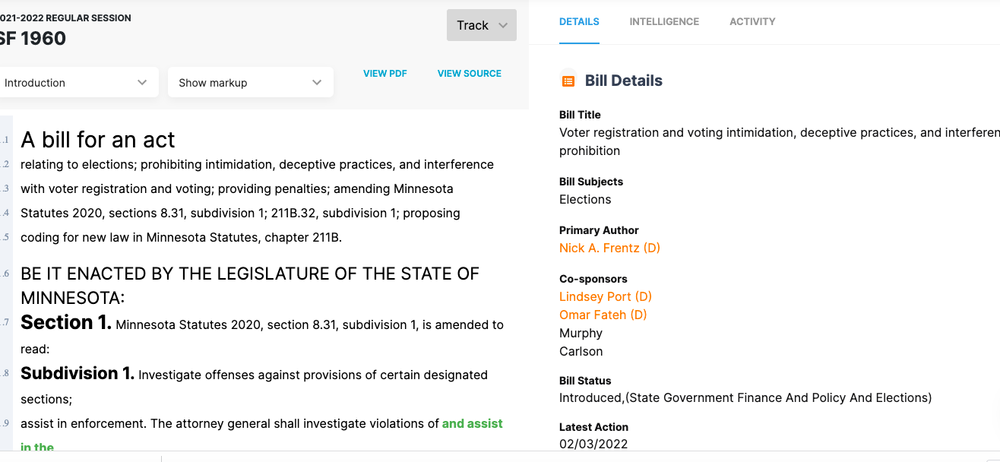Whether you’re championing voting rights, clean energy, or healthcare reform, one thing is certain. Being able to read and understand a bill quickly can help you advance your issue more easily.
With so many bills being introduced, not to mention being revised on repeat as they progress through the legislature, staying on top of the changes can make your head spin faster than an out-of-control merry-go-round.
If you—or someone on your public policy team—is still learning the components of a legislative bill, we’ve outlined how to quickly make sense of what a bill is trying to accomplish. Plus, we cover how to use legislative tracking software to streamline and simplify how to read legislative bills.
What Makes Up a Bill?
First things first. Understanding how bills are typically structured can be helpful, especially if you’re new to public policy.
Every state does things a bit differently. But for the most part, federal and state bills share the same basic structure, even though they may use different names or have slight variations in what’s required in a bill.
Bills typically begin with a title and a summary—called a caption by certain states. The title identifies the subject of the proposed legislation, while the summary provides an overview of how the bill will affect current legislation to become a law.
Each bill will also include who is responsible for introducing the bill—a primary sponsor or co-sponsors. In some states, the bill’s sponsor can be found under what’s called the enacting clause. There may be instances where two members of Congress introduce essentially the same bill, so checking the bill’s author can help you avoid reading the wrong bill.
The meat of the bill—exactly which laws the bill is trying to change and how it will specifically change them—is outlined in what are typically called sections. Often numbered for easier reference, sections will reference existing statutes on the books and spell out the changes the bill seeks to bring into effect.
Finally, the bill’s effective date, usually at the end, refers to the date the bill becomes a law.

The Beauty of Legislative Tracking Technology
Put simply, the language used in a bill is what becomes law, and that’s where reading a bill can become a bit cumbersome. To clearly illustrate the bill’s intention, a bill will strike through language it wants removed and underline new language that must be added in. Some states use bracketing to make it extra clear the bill seeks to remove the language that’s part of existing law.
Example:
A tax of three [two] dollars per person [and three dollars per family] shall be collected in alternate years.
Legislative tracking technology like Plural automatically highlights a bill’s new language being added in green and old language being removed in red. The color-coding, which is based on universally understood traffic cues, makes the information far easier to digest.

The color-coding feature makes it easier to comprehend a bill’s nuances at a glance, saving your public policy team time that can be used developing public policy strategy. This can be especially helpful when tracking bills that support your issues across multiple states.
Even better, when you’re reading a bill within Plural, you can quickly and easily create Workspaces for specific teams to collaborate based on issue, creating a repository of similar bills you want to track.
One final tip: When reading a bill for the first time, take a moment to ground yourself in the part of the law the bill is seeking to change. For example, a new cryptocurrency bill may seek to legislate issues related to Commerce or the Environment, or both. Reading the bill carefully to know the particular statutes being affected is what will help you decide if the bill is one your team will support.
Find out how Plural can help you easily analyze bills
